Perennial coreopsis: description, varieties, recommendations for growing

Coreopsis (Coreopsis) perennial among gardeners is simply called Lenok. It belongs to the large Aster family, which includes about 120 species. There are both perennial and annual species. Most of them are grasses, but there are also dwarf shrubs among them. The plant came to us from North and South America, it is possible to find it in Africa.
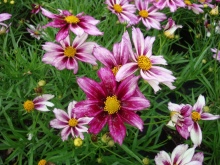
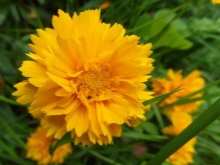
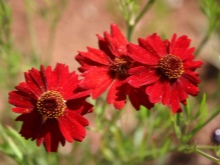
Description
Coreopsis is an unpretentious beautiful shrub, consisting of many thin stems. The plant can reach a height of 1 meter. On each stem there are many yellow, orange or pink inflorescences. The flowers are small, 3 to 8 cm in diameter. They can be single-layer with a sharp tip or multi-layer with carved edges and with a brown or yellow center.
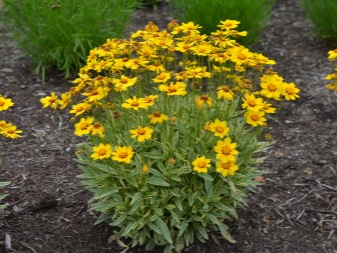
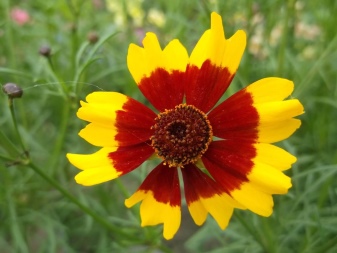
Varieties
Large-flowered
This coreopsis differs from others in its large flower size, which reaches 8 cm in diameter. The leaves are simple, and on top of the stem are dissected. The flower consists of yellow petals connected by a light brown center. Flowering begins in July and lasts until late autumn. The root system is fibrous.
3 years after planting, the plant requires transplantation and rejuvenation.
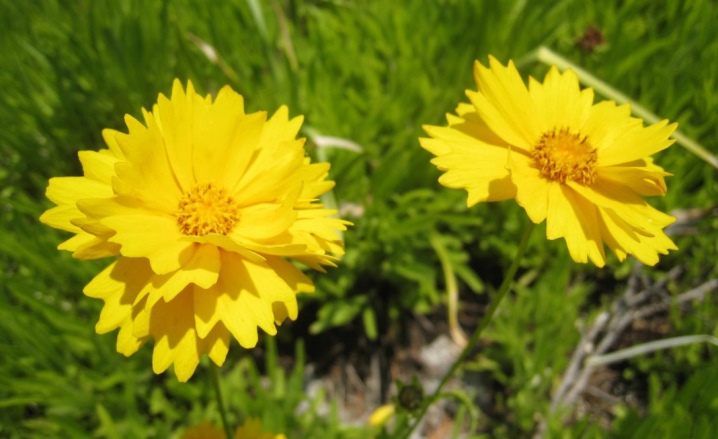
Among the varieties of large-flowered coreopsis, several can be distinguished.
- Calypso - differs in yellow single-layered inflorescences with a red core.
- Baden gold - this variety has large yellow inflorescences that resemble the sun. The plant reaches 0.8-1 m in height. The foliage is soft green, against the background of which numerous yellow inflorescences stand out effectively. Early flowering, begins in June.
- Mayfield Giant, Sunburst - varieties with similar shrubs. Their height is no more than 80 cm. The inflorescences are single-layered, yellow; closer to the center, the petals have a brown middle.
- Sunray and Early Sunrise - in the bushes of these varieties, the height reaches half a meter. Terry flowers, volumetric shape.
- Sundancer - the smallest variety, up to 30 cm high. Has orange flowers.
- "Golden ball" - a shrub that has golden flowers, evenly spaced, while the bush looks like a ball.

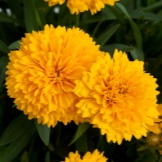

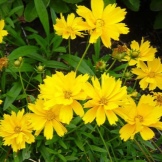
Lanceolate
This species received this name because of the shape of its leaves. Collected at the base, they are slightly elongated, lanceolate-lily-shaped. A flower is located on a shoot that has no foliage. Inflorescences are small, about 5 cm, may be yellow. The shrub reaches a height of about 60 cm. Flowering begins in July and lasts until September. Unlike the large-flowered species, this one grows longer in one place, propagates easily by seeds and forms large areas of growth. The homeland of this species is the central regions of North America. It can also be found in China and Japan.
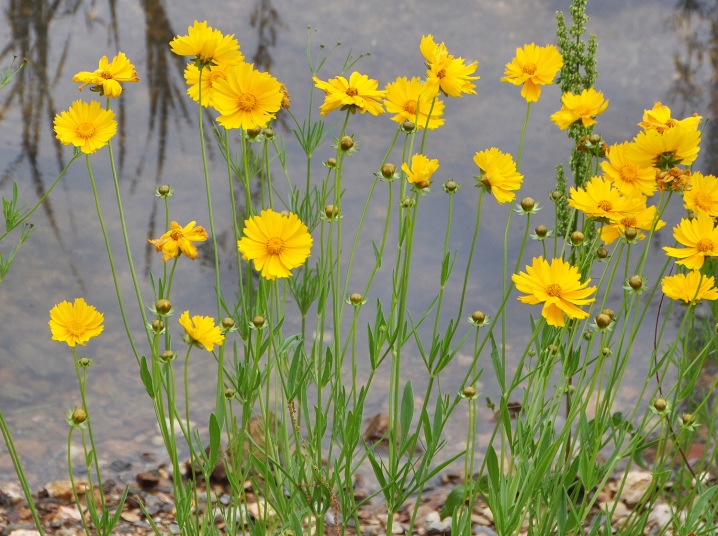
Varieties.
- Golden queen - the height of the shrub is no more than 60 cm. Abundant flowering of yellow-lemon color with a pronounced center. Lasts from mid-summer until the first frost. The baskets have a diameter of 5-6 cm.
- Rotkehlchen it is distinguished by a variegated flower with a red center and yellow petals with carved tips. The diameter of the flower is no more than 5 cm.The shrub itself grows up to 50 cm.
- Goldfink - the lowest shrub of the species, having a maximum height of 30 cm. It has beautiful yellow flowers, in the center their tone changes to red.
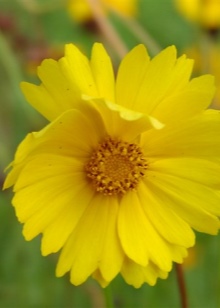
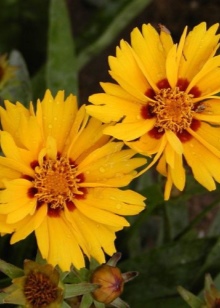
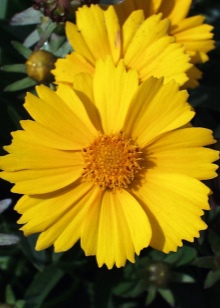
Whorled
The most undemanding view. In one place without transfers, he can live up to 6 years.Thin shoots extending from the base form a sprawling shrub with a diameter of up to 60 cm. The height of the bush is no more than 90 cm. Very thin foliage is like needles.
An interesting combination of leaves with flowers of light yellow or red tones with a dark center makes this look especially popular.
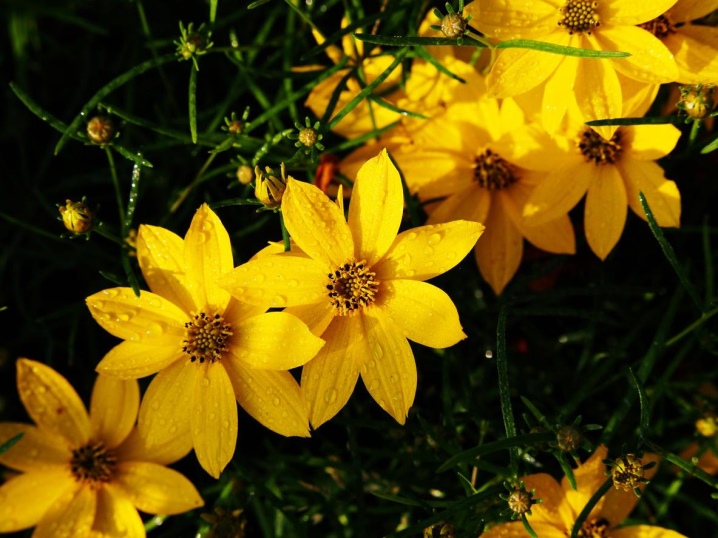
Flowering begins in July and lasts until October. A large number of inflorescences, similar to stars, have a diameter of 3 cm. The southeast of the United States is considered the homeland of this plant, where it can be found in non-overgrown parts of the forest.
Varieties.
- Zagreb - this variety has a short height up to 30 cm and blooms with a honey color.
- Moonbeam - undersized shrub up to 30 cm, blooming with an amber or milky shade.
- Mercury rising - this variety has a very rare color - the flowers have a burgundy color with a yellow center. The height of the shrub is 40 cm.
- Golden shower - the bush reaches a height of 70 cm and responds well to the formation of a bush. Yellow bloom begins in July and lasts until September.
- Ruby Frost - a hybrid shrub up to 40 cm high with an amazing pomegranate color. Along the edge of each petal there is a carved edging with whitish spots. The middle is terry with yellow veins.
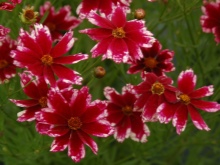
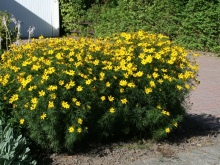

Eared
Coreopsis Eared (Eared) - a short perennial up to 30 cm high. The stem is half naked. The leaves are oval. After shearing, the shrub grows strongly in diameter. Yellow inflorescences about 5 cm in diameter resemble a daisy flower. Regular cutting of faded buds stimulates the emergence of new ones.
Flowering begins in May and lasts until June.
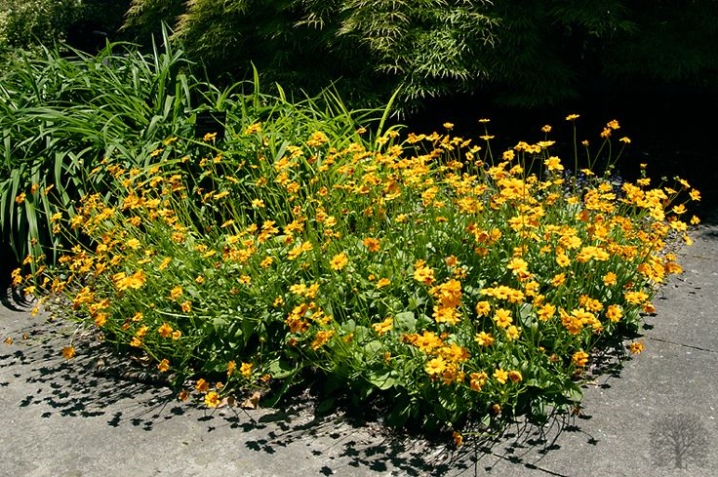
Varieties.
- "Nana" - a small bush with yellow flowers. It blooms twice - in summer and autumn. The interesting structure of the leaves looks like a folded and then stretched accordion with a dissection at the bends.
- "Zamfir" - a small shrub with straight shoots. The leaves are rounded, split at the end. Flowering begins in May with a golden color.
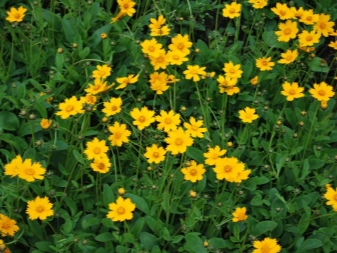
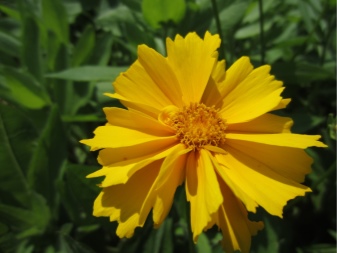
Pink
Pink coreopsis (lat.Coreopsis rosea) - popularly this shrub is called cosmeya for its splendor, its height reaches 40 cm. It has elongated narrow leaves, similar to needles. The flowers are pink with a yellow center, flowering begins in June and lasts until September. This species is used to create hybrid varieties.
Popular varieties.
- Sweet Dreams- this variety is distinguished by its raspberry-colored flowers. A shaggy yellow center connects the petals with a jagged edge. The variety prefers to grow in the shade.
- Heaven's Gate - this name is translated as "heavenly gate". A small shrub with a height of 20 to 40 cm has pink flowers with a richer color in the center.
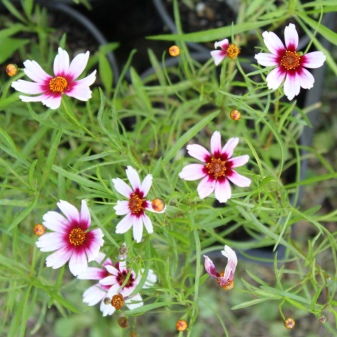
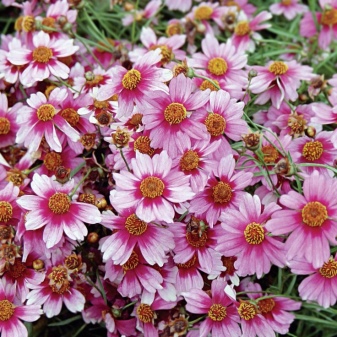
Landing
If you are going to plant coreopsis in open ground from seedlings, it is better to do this in April, when the air warms up a little and there will be no frost anymore. For planting, it is necessary to choose a sunny place protected from the wind, since in the shade the shrub changes shape, its shoots stretch out, flowering disappears. The distance between the shoots should be about 20 cm. This plant is very unpretentious, so the soil should not be fertile and oversaturated with useful components. Only in such conditions will the shrub bloom favorably. If the soil is rich in minerals, then there will be no flowering. All minerals will be used for the development of greenery on the bush. Light, loose soils with good drainage are excellent for coreopsis. The plant requires a transplant by dividing the bush every 3-4 years.
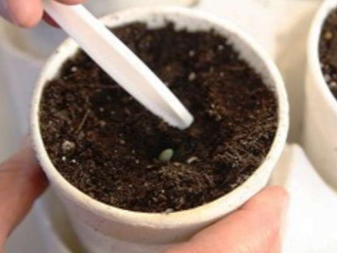
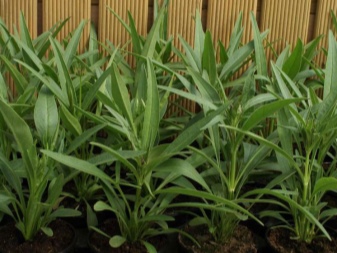
Care
Watering
This plant is resistant to drought, so watering should be timely, as the soil dries up, without stagnant water.
The damp ground under the bushes must be loosened so that the top layer does not crack.
Weeding
After planting the culture, the soil under it is loosened every day for the first two weeks. This will give air access to the root system and prevent weeds. After this time, the roots will already begin to grow, so weeding must be done manually so as not to affect them. The ideal option for a plant would be to mulch the soil near the root. This will protect the root system from overheating and keep moisture longer and prevent weeds from germinating.
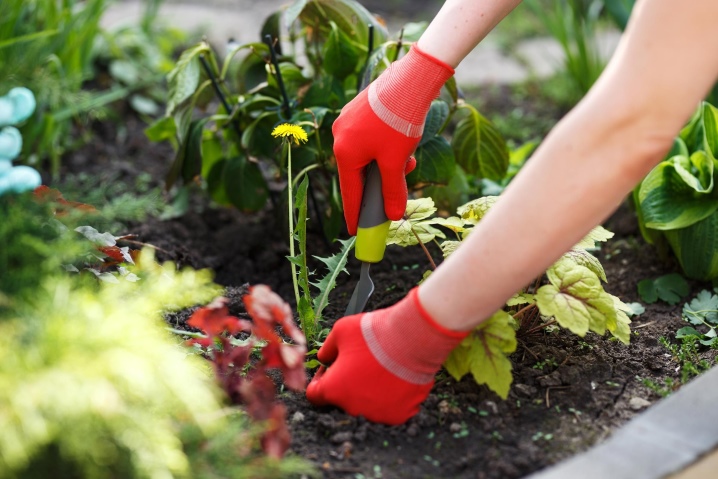
Pruning
Pruning is very important for this plant. Timely removal of faded buds stimulates and prolongs flowering until late autumn. In high varieties, you can prune dry buds with a part of the shoot, in undersized varieties, you can completely cut the branch. Shoots will grow in a short period of time.
Top dressing
Fertilizers are applied only to very poor soil. Top dressing is applied in spring and summer during flowering in the form of soluble mineral fertilizers.
It is undesirable to feed this culture with organic matter and manure.
Garter
If you have fertile soil, then the bushes will definitely gain a good height, therefore it is necessary to prepare supports and tie up the plant in order to avoid breaking shoots and maintaining shape.
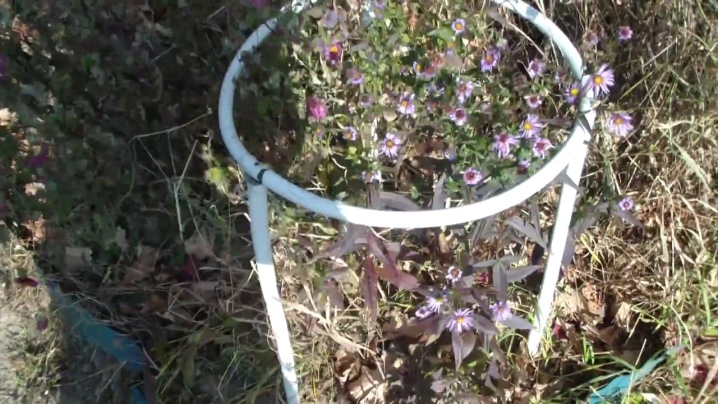
Preparing for winter
In the fall, when the first frosts have already begun, the shrub is cut off completely, leaving a few centimeters to indicate the place of its growth in the spring. For the winter, it does not require insulation, as it is frost-resistant.
The exception is the large-flowered species. Its strong pruning for the winter can provoke freezing.
Reproduction
Reproduction of this plant is carried out in three ways: by seeds, cuttings and dividing the bush.
Seed method
Seeds are harvested from ripe dry inflorescences. In April, they are sown on the surface of the soil without deepening, the earth is moistened. Cover with foil or glass to create a greenhouse effect and wait two weeks before seedlings emerge.
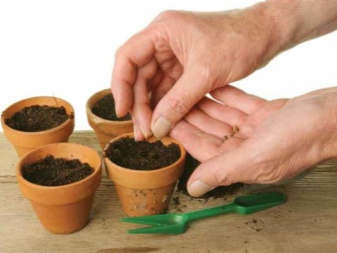

When it pulls up and gets stronger, it can be dived for the first time into containers at a distance of 2-3 cm from each other. After the shoots grow up to 10 cm, plant them in separate pots. During this period, pay attention to watering. To avoid infestation of the root with black stalk, it should be moderate and only in dry ground.
Seedlings with pots must be periodically taken outside for hardening. When the seedlings get stronger, around May, they can be planted in a permanent place with an interval of 50-60 cm between the bushes.
The plant is prone to self-seeding, so remove dry inflorescences in time.
Dividing the bush
This method is recommended for use in spring or autumn. Look for a shrub over 3 years old. Dig out the root and divide it into the required number of pieces. Place each part in the prepared hole and pour. The plant will bloom in the first year.
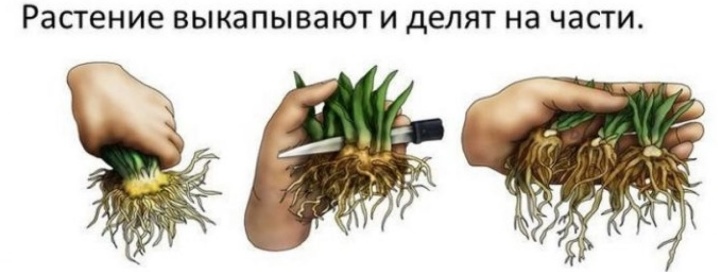
Cuttings
For this method, it is necessary to take healthy shoots in the summer, cut them to 10-12 cm so that 2-4 buds remain on each. Then plant these cuttings in a pot, cover with a jar and water. They need to be kept in a dark place until roots appear and new leaves form.

Diseases and pests
Coreopsis has very good immunity, but sometimes the plant is exposed to some fungal diseases, viral infections and pest attacks. From fungal diseases, rust infection on the leaves and fusarium can be distinguished. To combat this ailment, it is necessary to remove the infected leaves and treat the shrub with a fungicide.
If the plant has undergone a large-scale infection and treatment does not help, then it is better to destroy it so that the infection does not spread to other crops.
With viral infections, your shrub may stop growing, its leaves begin to curl, and the flowers fall off. Treatment is not applied, as it is useless in this case. The virus lives with the plant, is transmitted through seeds and seedlings. Better to dispose of the bush immediately.
Of the pests, the coreopsis may be affected by aphids and various beetles. These insects lend themselves well to destruction. To do this, it is necessary to treat the shrub with any insecticide.
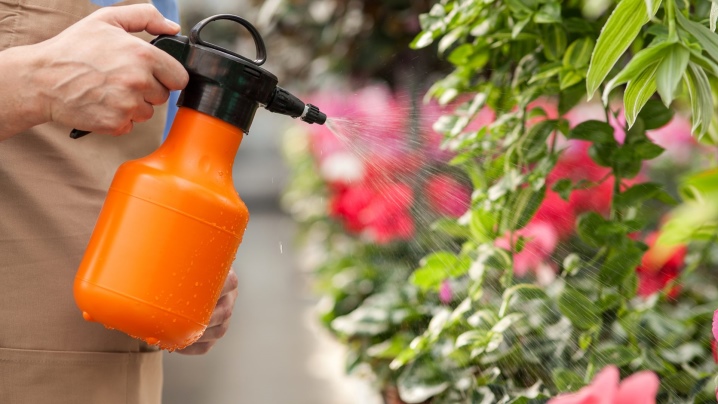
Use in landscape design
Due to the fact that coreopsis is unpretentious and blooms all summer, it will adorn any flower bed and garden. If your area has a lot of lawn grass, you can highlight this area by planting a low-growing coreopsis along the edge. In group plantings, you can plant tall varieties of this plant in the background, and in front of them plant low plants such as dwarf hosta, juniper, phlox.
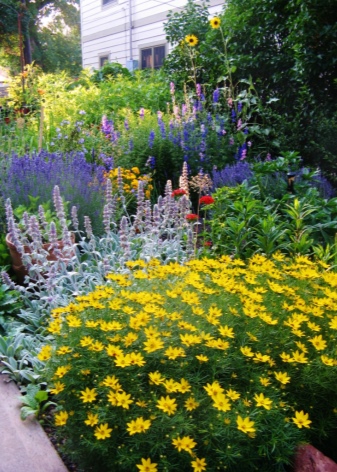
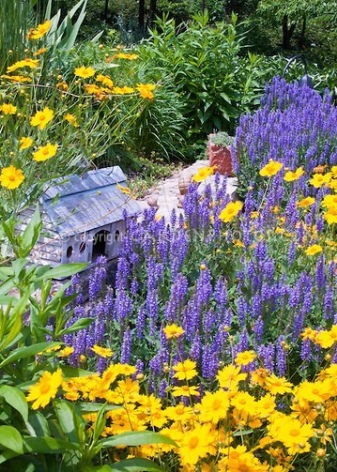
Low-growing varieties will perfectly decorate curbs or an alpine slide.
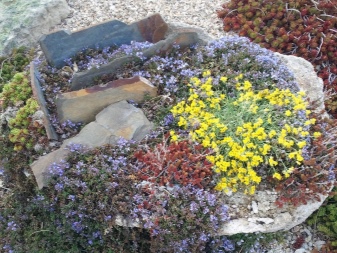

If you have a gazebo or balcony, you can decorate it with a pink coreopsis planted in hanging pots. With its brightness and abundant flowering, this plant has earned the love of gardeners.
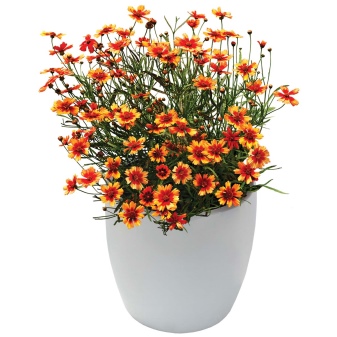
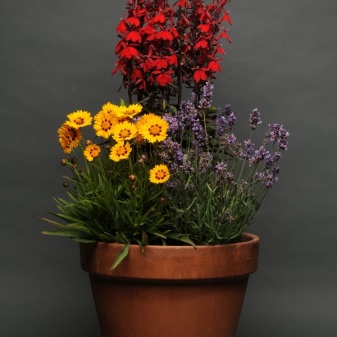
Cultivation and care of perennial coreopsis in the video.







































































































The comment was sent successfully.